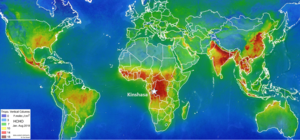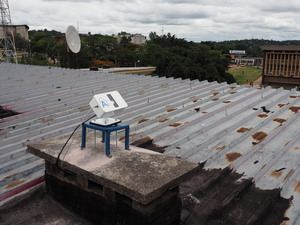|
~
|
Space-based measurements indicate that Central Africa is a global hotspot of formaldehyde (H2CO). This is due to biomass burning and to the emissions of the vegetation itself. African megacities also suffer from poor air quality associated with the widespread use of domestic combustion for cooking and old car fleets, which lead to large amounts of PMs and NOx. Due to the rapid demographic growth, the air pollution is expected to further deteriorate in African megacities. There are thus clear interests for local measurements in megacities of Central Africa, from scientific but also public health perspectives. Since 2016, BIRA-IASB and the University of Kinshasa (UniKin) have been collaborating in the framework of the Kinaero project, supported by the Belgian Science policy. The KinAero project has first consisted in knowledge transfer in atmospheric sciences through seminars and lectures at UniKin and through the visit of a UniKin student at BIRA in Spring 2017. From May 2017, the UniKin colleagues have operated a compact spectrometer to quantify trace gases in the scattered sunlight. In November 2019, the last mission of the Kinaero project focused on the installation of a newly-developed compact MAXDOAS instrument on the roof of UniKin (4.42°S, 15.31°E). The analysis of the data collected so far in Kinshasa is the subject of a PhD co-supervised by UniKin and the University of Liege. This PhD study will compare the measurements of NO2 and H2CO at UniKin with satellite data (such as TROPOMI) and with chemistry and transport model outputs (e.g. GeosCHEM). Regarding the freshly installed MAX-DOAS instrument, it will be integrated in the FRM4DOAS network, which aims to the harmonization of MAXDOAS systems and datasets in the context of satellite validation. For more information, contact the involved scientists:




Click images to enlarge.
Links
Share this article |



